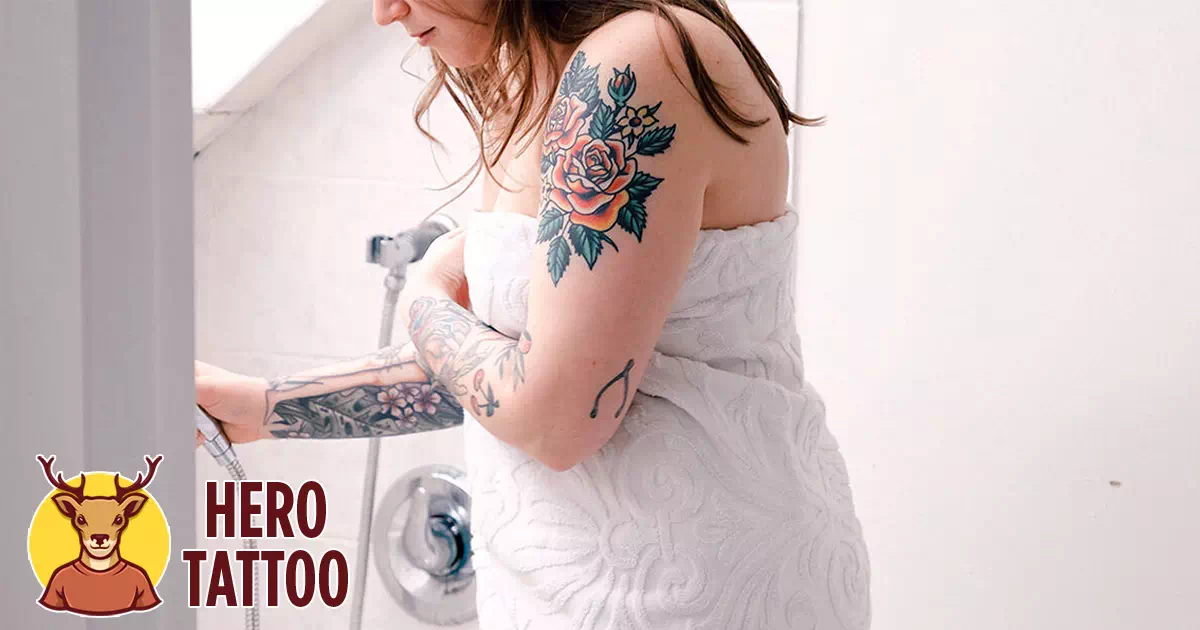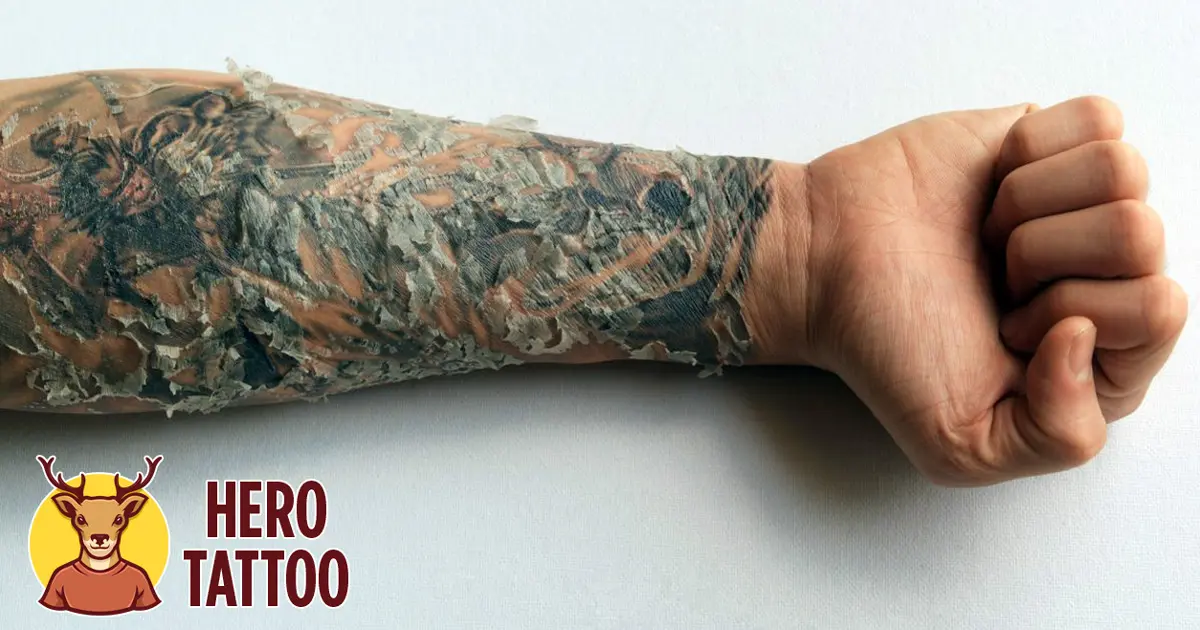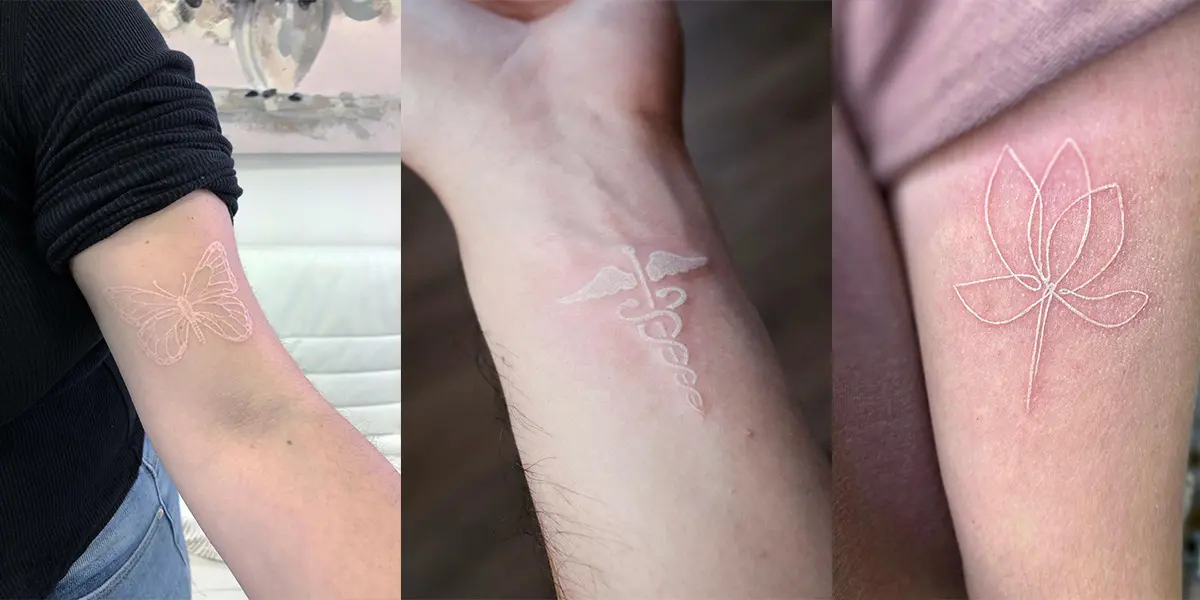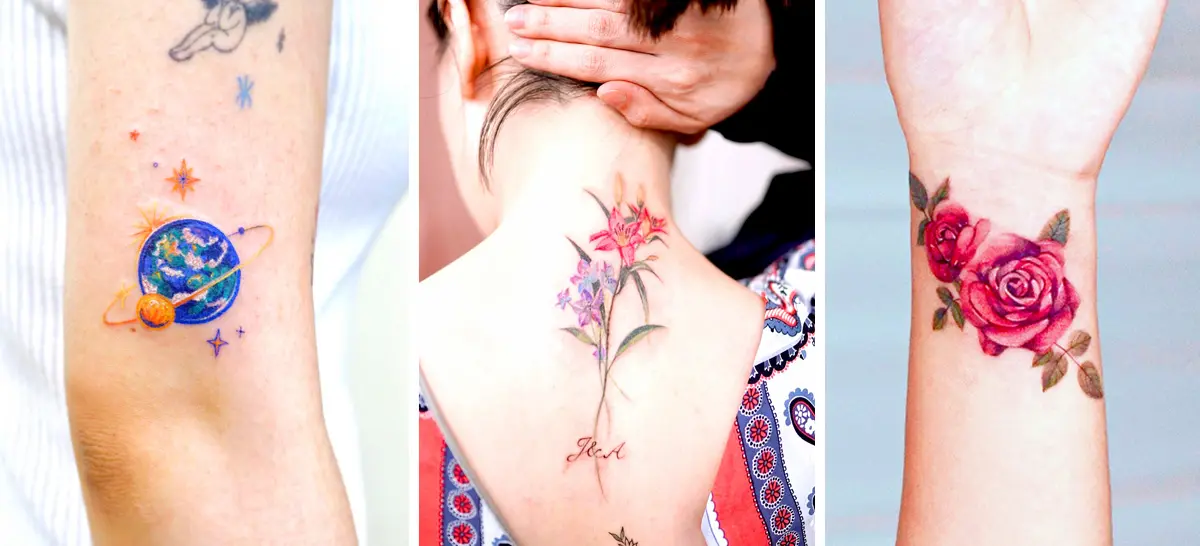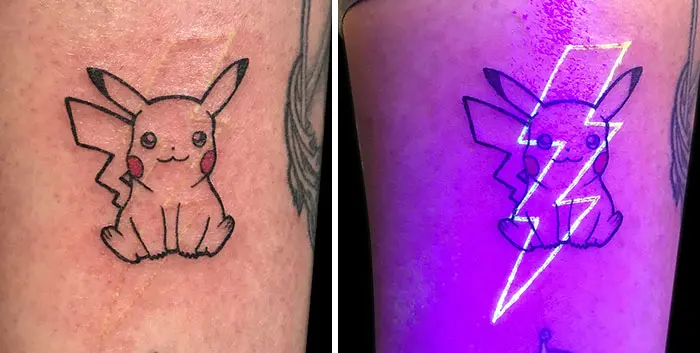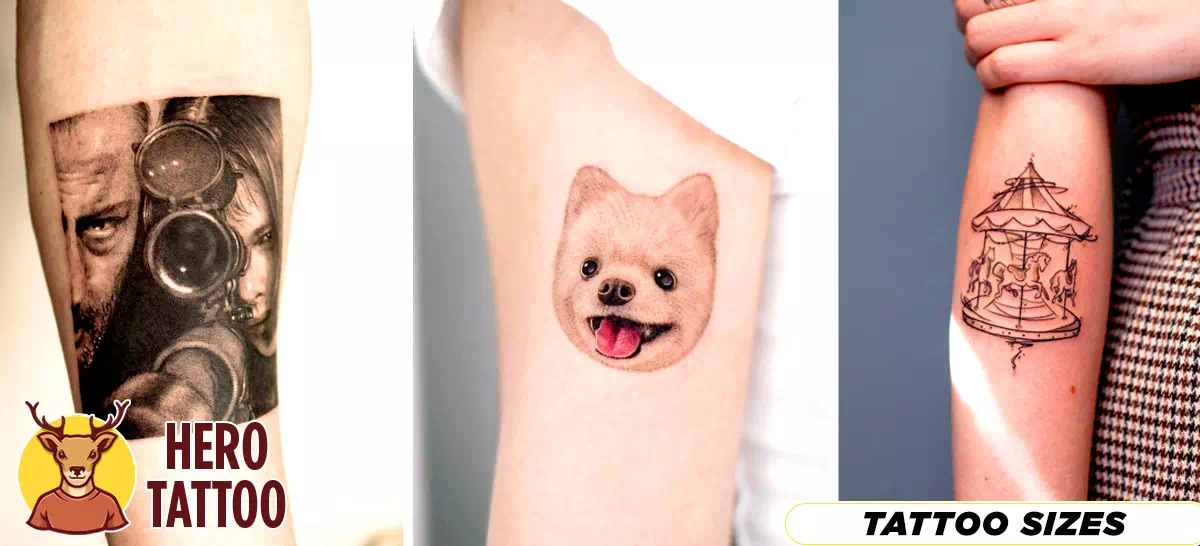Getting a new tattoo is a thrilling experience, especially if it is your first time getting one. However, amidst all of the excitement, there comes a time in the tattooing process when you stop thinking about the tattoo itself and start thinking about how you’re going to take care of it correctly. It is no secret that the aftercare regimen, as well as whether or not you adhere to it appropriately, may make or break your newly acquired tattoo.
Every tattoo artist will advise you on what to do in general when getting your tattoo. It would be beneficial if you kept the tattoo clean but did not overdo it with the cleaning. Keep it moisturized, but not too so. Everything appears to be rather tricky, and there is a great deal of strain on the entire aftercare process during the first week of recovery.
However, there is one thing that tattoo artists neglect to disclose to their clients unless they specifically inquire about it: showering and bathing with a fresh tattoo. They could say a few words about how you shouldn’t go swimming, but what about other activities in which you are exposed to water, such as showering or taking a bath?
So, in the following paragraphs, we’ll fill you in on all the information your tattoo artist either forgot to convey or that you’re just interested in learning more about. So, without further ado, let’s get this show on the road.
Everything You Need to Know About Showering After Getting Tattooed
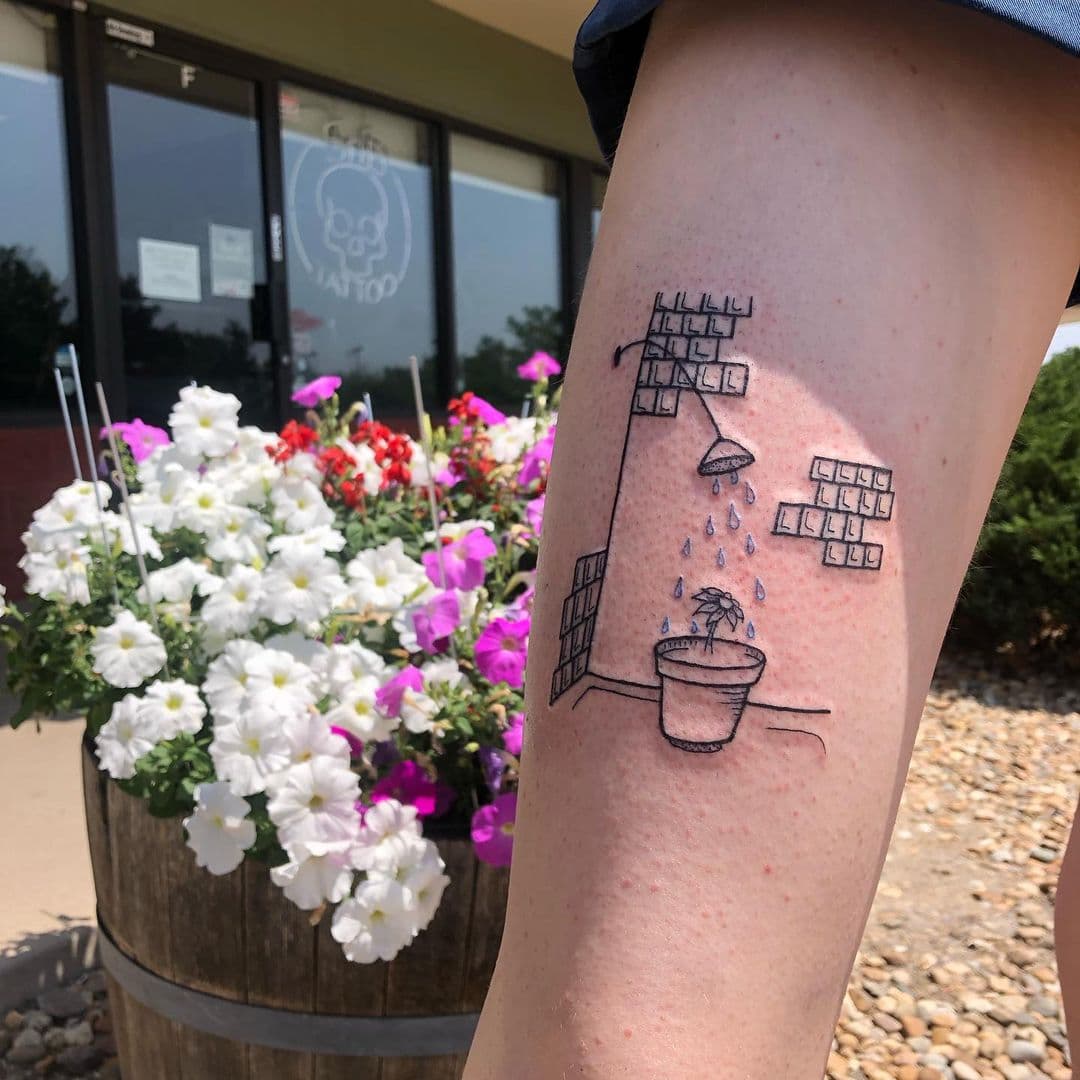
Can I take a shower when I have a new tattoo?
Answer: Yes, you can take a shower while still sporting a brand new tattoo. Not only may you shower after getting a tattoo, but you should shower after getting a tattoo. After all, you wouldn’t want to wander about unclean while dealing with a delicate, open wound, would you?
However, here’s the catch: you will not be able to shower immediately.
Your tattoo’s healing process will be determined by how well it heals over the first 24 to 48 hours after applying it. It would help if you refrained from playing with the tattoo and exposing it to water straight away during that time.
This is because the tattoo or wound has to begin to close as quickly as possible. First, the tattoo must be cleansed of all the extra ink, blood, and plasma before the healing process can begin. Following that, the tattoo may require a little wash, after which it will need to be allowed to dry completely. All of this should take place during the first 24 to 48 hours, so please be patient during this time.
When Should I Shower After Getting a Tattoo?
After having a fresh tattoo, you may take your first shower the day after getting the tattoo. This might take anything from 12 to 48 hours. The tattoo may become soiled after a night of gushing blood and ink. To ensure that your tattoo heals correctly, you should give it a mild wash with antibacterial soap and lukewarm water after each application.
After 48 hours, your tattoo should be safe to be exposed to water, but only once or twice a day at the most. It is critical to avoid exposing the tattoo to water for extended periods during the first week. This will prevent the tattoo from drying out and creating a new skin layer on the area surrounding it. Your tattoo may become infected in this situation.
We also urge that you avoid activities that make you sweat, such as working out, running, and so on. Bacteria carried by sweat have the potential to contaminate tattoos. Furthermore, sweat stops the tattoo from drying out, which increases the risk of infection. If you must stay with short walks and yoga-like movements that will keep you active without generating excessive sweating and raising your body temperature, follow these guidelines:
So, how can I take a shower without interfering with the tattoo?
Here are a few essential suggestions to keep in mind when bathing with a fresh tattoo:
- While showering or cleaning the tattoo itself, it is necessary to shower with a tattoo or wash the tattoo with a moderate, antibacterial, fragrance-free soap. Try to be careful with the tattoo and avoid pressing or rubbing it. Use just lukewarm water during the initial tattoo wash and avoid lathering the soap too much.
- To facilitate taking a longer shower, you might apply a slight coating of Vaseline to the healing tattoo to allow for a more prolonged showering session. This should protect the tattoo from being damaged by water or more aggressive soaps. After you’ve finished showering, make sure to remove the Vaseline layer off the tattoo and gently wash it. Vaseline should not be used in any other way since it will clog the tattoo, keep it from drying, and perhaps cause infection if misused.
- A washcloth or loofah should not be used because, even though we use them to get clean, they are complete with bacteria and germs and should not be used.
- Isn’t that disgusting? As a result, avoid showering with these substances to prevent the tattoo from becoming contaminated. Showering with your hands is recommended until the tattoo has completely healed. Also, be sure to use a fresh, clean washcloth or loofah in this situation.
It is best not to spray directly on the tattoo.
Avoid letting the water pressure directly on the tattoo when taking a shower.If possible, stand under the shower and allow the water to flow over the tattooed area until it is scorched.
You shouldn’t shave the tattooed region; you should never shave an open wound, which is what your tattoo was when it was first applied.
Be patient and allow the tattoo to cure entirely before delicately shaving the area around it.
Is it OK for me to take a bath after having a tattoo?
As previously said, it is essential to take brief showers and avoid exposing the tattoo to excessive moisture for an extended period. Showering is OK, but soaking the tattoo in water is not a wise move. As a result, avoid immersing the tattoo in water until it has healed completely.In addition to preventing your tattoo from drying out and healing correctly, excessive moisture can also cause a tattoo infection, which can be fatal.
It should be noted that the same holds for swimming. Swimming should be avoided until the tattoo has healed completely, which should take at least three weeks. Submerging the tattoo underwater for a more extended period of time may prevent it from healing properly and may even cause the entire process to be prolonged, perhaps resulting in infection.
What should I do with my tattoo after I’ve had a shower?
After bathing, the tattoo must be carefully removed from the skin.
First and foremost, if you’ve applied Vaseline to the tattoo to protect it from water, be sure you thoroughly rinse it off and wash the tattoo with lukewarm water after that.
After you’ve finished bathing, be sure to lightly tap the tattoo with a cloth, a soft towel, or even a paper towel to remove any excess moisture. Avoid making rapid motions, rubbing aggressively, or other similar behaviors. Be cautious when pressing the tattoo to the skin to ensure that extra moisture is picked up.
Now that your tattoo has dried out, it is critical to assist it in regaining its natural moisturizing properties. You may do this by applying a mild, fragrance-free lotion or shea butter to your skin. It is critical to use lotion once or twice a day, especially if the tattoo is peeling or itching, to prevent further damage. Until the tattoo is healed, the lotion will remain your best friend.
The following are some of our favourite tattoo aftercare creams and lotions:
Bepanthen Diaper Care Ointment is designed to care for sensitive skin, such as tattooed skin, and is dermatologist recommended. Due to the presence of vitamin D5 in the recipe, it is soft and promotes faster tattoo healing. The ointment does not include any fragrances, preservatives, or dyes.
Your tattoo will be taken care of in an instant with La Roche-Posay Cicaplast Balm, which works in seconds. The balm is designed to comfort skin that has been treated, cracked, dehydrated, or dried. It helps maintain the skin’s natural barrier while also keeping it hydrated. The balm contains shea butter, glycerin, and panthenol, which help to keep the skin hydrated and tattoos from becoming infected.
Brooklyn Grooming Tattoo Balm – This balm has been created mainly for the treatment of tattoos. It is nourishing and rejuvenating, and it is beneficial for swelling, tattoo peeling, irritation, and itching, among other things. Beeswax, sesame seed oil, shea butter, and hemp seed oil are used to produce the balm. After a shower, the balm helps to encourage speedier tattoo healing by keeping the skin moisturized.
Other factors to take into account:
- Do not contact the tattoo until you have thoroughly washed your hands.
- Avoid sunbathing, and be sure to use a high-SPF sunscreen whenever your tattoo is exposed to the sun, especially in the summer (UV rays).
- It’s important not to pick or scratch the tattoo while it heals to avoid infection. In addition to causing infection (since you are spreading bacteria from your fingers and nails to the tattoo), picking and peeling the tattoo will prolong the natural healing process.
- If you have a tattoo, avoid putting harsh chemicals on it, whether chemical or physical. For example, stay away from heavy, scented lotions, rough towels, and abrasive clothing and linens.
- During the healing phase, refrain from applying Vaseline to the tattoo. You should only use Vaseline when you are taking a shower to protect your tattoo from dampness. Despite this, you must properly clean the tattoo to remove any vaseline residue.
- Check to see that your tattoo is not drying out. Make an effort to strike a balance between moisture and the natural drying out of the tattoo. Excessive exercise can cause inflammation and illness in the body.
- After your tattoo has healed fully, avoid using hot tubs, swimming pools, or being in the water in general. These locations can expose your tattoo to germs, and continuous contact with moisture can result in a tattoo infection.
6 Frequently Asked Questions About Showering with a New Tattoo
Forget about those urban legends about what occurs when you take a shower after getting a tattoo; they’re completely false. It’s not going to wash off. Showering while sporting a new tattoo is completely safe if you follow a few simple measures.
The following are some suggestions for dealing with shower time if you have new ink.
When can I expect to be able to take a shower?
This depends on the artist’s covering of your tattoo and the length of time they recommend you keep it covered.
It will be necessary to wait until the tattoo is removed before showering if the tattoo is covered in plastic or a piece of ordinary bandage. Depending on the location and size of your ink, this might take anywhere from one to twenty-four hours.
As long as you adhere to the artist’s instructions and leave the bandage on for the specified amount of time, you should be OK to shower whenever your artist utilizes a medical-grade, waterproof bandage, such as Saniderm.
Is there anything I should be doing differently while I shower?
Yep,
Even if your tattoo becomes somewhat damp, it should not be immersed in water or exposed to running water for an extended length of time.
Keep your shower time to a bare minimum, and be careful with your skin to prevent aggravating your newly tattooed skin.
This means bypassing the loofah or washcloth altogether – at least when it comes to the tattooed region. It’s quite OK to get your rub-a-dub on somewhere else. Aside from the fact that they are abrasive on freshly tattooed skin, loofahs, sponges, and washcloths can house germs, increasing the likelihood of contracting an illness.
Only mild, fragrance-free soap should gently wash the affected region. Skin irritation and drying can occur when using products containing alcohol or certain substances. This may result in scarring and a delayed healing process.
Avoid directing the spray straight into the inked area unless you have really strong water pressure. While standing under a shower and allowing the water to wash over you or using your clean hands to rinse the tattoo, it is OK to do so as long as you do not stay any longer than necessary.
What will happen after that?
It’s important to remember that solid touch and harsh chemicals are harmful. The use of delicate touch and gentle products is beneficial.
Using a clean towel or paper towel, gently wipe the area dry. Then, apply a thin layer over the area with a light coating of unscented moisturizing ointments such as Aquaphor or A & D cream. This helps keep the skin from drying out while also creating a protective layer over it.
During the healing process, the importance of hydrating and moisturizing your tattoo will take precedence over preserving it. You will be able to move from ointment to lotion instead of cream. Moisturizing your skin helps to protect it from becoming dry and irritated.
In terms of lotion, you’ll want to stick to unscented lotion that doesn’t include any alcohol when making your selection.
Can I take a bath?
Nope.
The fact that your tattoo is an open wound means that bathing it in water might expose it to microorganisms and increase the chance of infection resulting from it. Soaking can also cause the skin to become dry, which can lead to cracking and make it more prone to infection and scarring.
If possible, avoid immersing or leaving your tattoo wet for an extended period of time after it has been applied.
This means no swimming or sitting in bathtubs, hot tubs, pools, or other bodies of water for at least two weeks after the procedure (or as long as your tattoo artist recommends).
What is the best way to tell whether my tattoo has completely healed?
Your tattoo artist will advise you on how long the healing phase will last and what activities you should and should not engage in during this period.
Within 2–3 weeks, the outer layer of the skin will have healed, and the region will seem and feel as if it has been completely healed.
Tattoos penetrate deeper than the surface layer of skin, so don’t go getting your bath salts or putting on your swimsuit just yet. Some people might take as long as six months to recover.
The length of time it takes for your tattoo to heal correctly is determined by the tattoo’s size, its placement, your lifestyle habits, and the aftercare you provide.
The better you are at following the aftercare recommendations that are provided, the sooner you can be expected to recover.
What is the best way to tell whether anything is wrong?
The skin that has had a tattoo applied to it is not uncommon to look and feel somewhat raw soon following your tattoo visit. It is normal to see some redness, crusting, and clear seeping during the first few days.
Approximately 2 to 3 days later, you will most likely see some peeling, particularly in the shower. This is entirely typical at this point. However, don’t speed up the process by plucking or peeling the skin, since this might result in scarring or discoloration.
If your tattoo is left wet for an extended period, it may begin to bubble. This is why it’s crucial to minimize the amount of time you spend in the shower and pat your skin thoroughly dry once you’ve finished washing it.
Any additional changes to your skin may be symptoms that your tattoo isn’t healing correctly, that it is infected, or that you are having an allergic reaction to something.
If you see any of the following red signals, you should consult your tattoo artist:
redness that lasts for a long time.
- Skin that is bloated or swollen
- Fluid or pus that is leaking
- bleeding
- Itching or hives that are extreme
- discoloration
If you acquire any indications of infection, such as the following, get medical attention immediately.
- fever
- chills
- discomfort that is amplified or extreme.
- skin that is comfortable to the touch.
- increased or severe redness, as well as redness that goes beyond the tattoo area.
- Having a rash that is itchy, red, and bumpy on and around your tattoo
- tattoos that have open sores.
The bottom line is as follows:
Showering after getting a new tattoo is not only acceptable but is also essential for excellent hygiene.
Showering should not interfere with the healing process of your new tattoo as long as you adhere to the aftercare guidelines provided by your tattoo artist and avoid rubbing or soaking your tattoo in water.
Finally, remark that
You should avoid showering with a fresh tattoo on the day you get it and for the next 12 to 24 hours after that. After that period has passed, you must shower and thoroughly clean the tattoo to remove any residual ink, blood, and plasma. However, you should avoid overdoing it with bathing and cleaning because this will prolong the healing process and increase the likelihood of problems.
Swimming and bathing should be avoided until the tattoo has healed completely. That’s all there is to it. Hopefully, you found this post to be both valuable and enlightening! Look at our other related articles for further information on the tattoo and its aftercare instructions.
